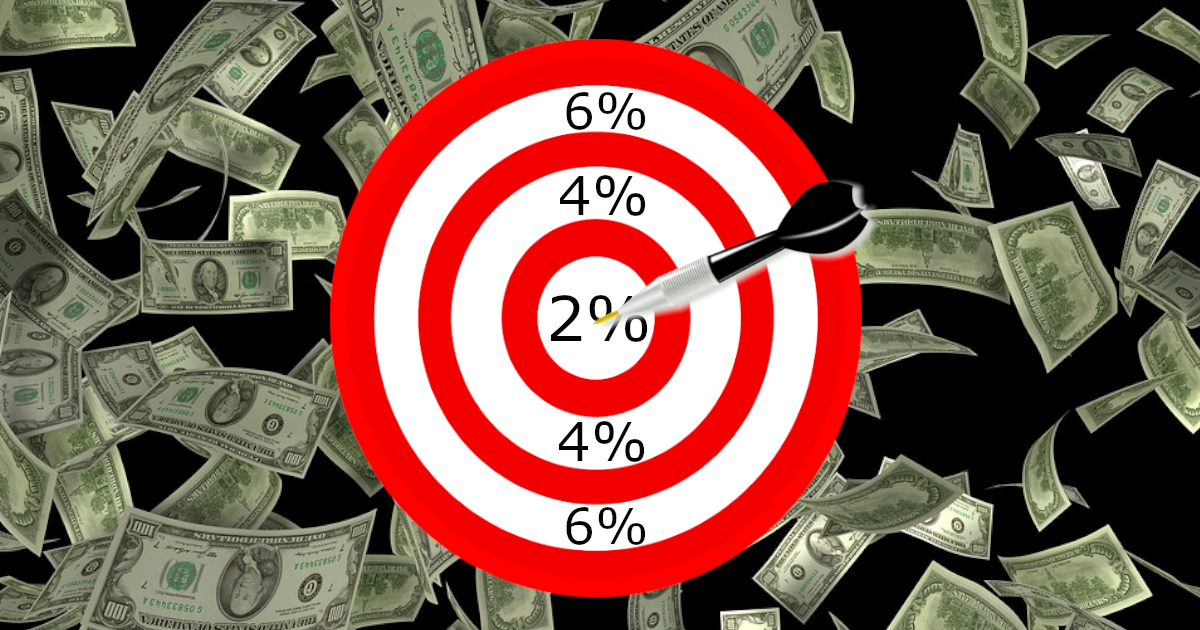

Fed Resolute:
Lower for Longer Ends
Target Rate...
Interest rate targeting is a fairly new practice among global central banks. New Zealand was the first to start targeting inflation levels in 1990. Though the US Fed adopted an implicit target rate of 1.5% by 2000, it increased its preferred rate to 2% after the Great Recession; and in January 2012, the Federal Open Market Committee (FOMC) announced an explicit inflation target of 2%.
Goldilocks
Although high inflation is not desirable, the overwhelming consensus among economists is that falling prices associated with deflation may be even worse. So while runaway inflation is to be avoided, some amount of inflation is desirable. The Fed considers its 2% target to be in-line with sustainable growth, while climbing slowly enough that most consumers will not notice.
Hikes & Cuts
After the Great Recession of 2008, inflation remained stubbornly below the Fed’s 2% target. The Fed enacted a stimulative monetary policy in an attempt to stoke the embers of economic expansion and fuel a moderate level of inflation. In response to the economic meltdown of the Great Recession, the Fed dropped rates to zero in 2008 and would not make an increase until December of 2015 when they hiked 9 times across 3 years from 2015 to 2018 for a total of 225 basis points. However, the Fed soon made 3 rate reductions totaling 75 basis points amid trade disputes. Then, in March of 2022, the Fed embarked on an historic economic tightening cycle, raising rates 10 times in just over 1 year for a total of 500 basis points. Coming from a long period of relatively low interest rates, the Fed’s abrupt pivot from accommodative to restrictive in the face of soaring post-pandemic inflation jarred markets.
Fed Put
No economic sector is spared from the restrictive tools the Fed can use to tamp down demand. With share prices being influenced by investor expectations of demand for services and products, Fed tightening typically weighs on stocks. The impact of the Fed’s sudden shift sent markets reeling for months, plunging as much as 28%. Frequently, during market downturns that coincide with Fed activity, media pundits speculate on whether the Fed will ease any tightening activities to prevent markets from falling further. Despite more than 9 painful months of constant new lows, the Fed stood resolute in their determination to turn the corner on inflation. Although the Fed consistently declared their intent to focus on inflation, participants in the Fed fund futures markets have repeatedly underestimated the Fed's willingness to make more hikes. Rate markets have continuously readjusted their outlook for the Fed’s next move. Following recent hikes, markets have priced in little to no chance of further ones.
Economy Unfazed…
In 2022, many economists expected the US to be in a recession by now. However, in spite of 500 basis points of rate hikes in a short time, labor markets and consumer spending have remained remarkably resilient. As positive economic data has continued to defy recession expectations, investors have continually raised their expectations of more hikes, with continued economic strength seen as fuel for inflation, moving the Fed to keep going. Currently, investor expectations reflect an almost certain chance of an additional 25 basis point hike this July, whereas just a few months ago, investors expected the Fed would be done hiking. With Fed projections not calling for inflation to reach their target until 2025, when they do stop hiking, they may maintain elevated rates until inflation reaches a desirable level. The age of lower for longer may be over, at least for now.
July 19, 2023
Markets Demystified is published the first and third Wednesdays of each month, and explores how stock market investing can relate to personal finance.
Thanks for reading!
Aesop Advisor LLC advertisements including newsletters and other publications are for informational purposes only. They do not attempt to predict future stock market moves and are not intended as individual investment advice. Aesop Advisor LLC newsletters and publications are not recommendations to buy, sell or hold any asset and are not intended as actionable investment advice or market timing. Equities references generally refer to the overall stock market, though if individual companies are mentioned, it is not a recommendation to buy, sell, or hold shares of the company. Unless otherwise indicated, terms including "stocks", the "stock market", and "market(s)" refer to Standard & Poor's 500 index. All investments involve risk and the past performance of a security or financial product does not guarantee future results or returns. While diversification may help spread risk, it does not assure a profit or protect against loss. There is always the potential of losing money when you invest in securities or other financial products. Publications and advertisements from Aesop Advisor LLC are not intended as investment, legal, or tax advice. Although gathered from sources believed to be reliable, Aesop Advisor LLC cannot guarantee the accuracy and completeness of data or information presented in publications and advertisements. This is an advertisement.